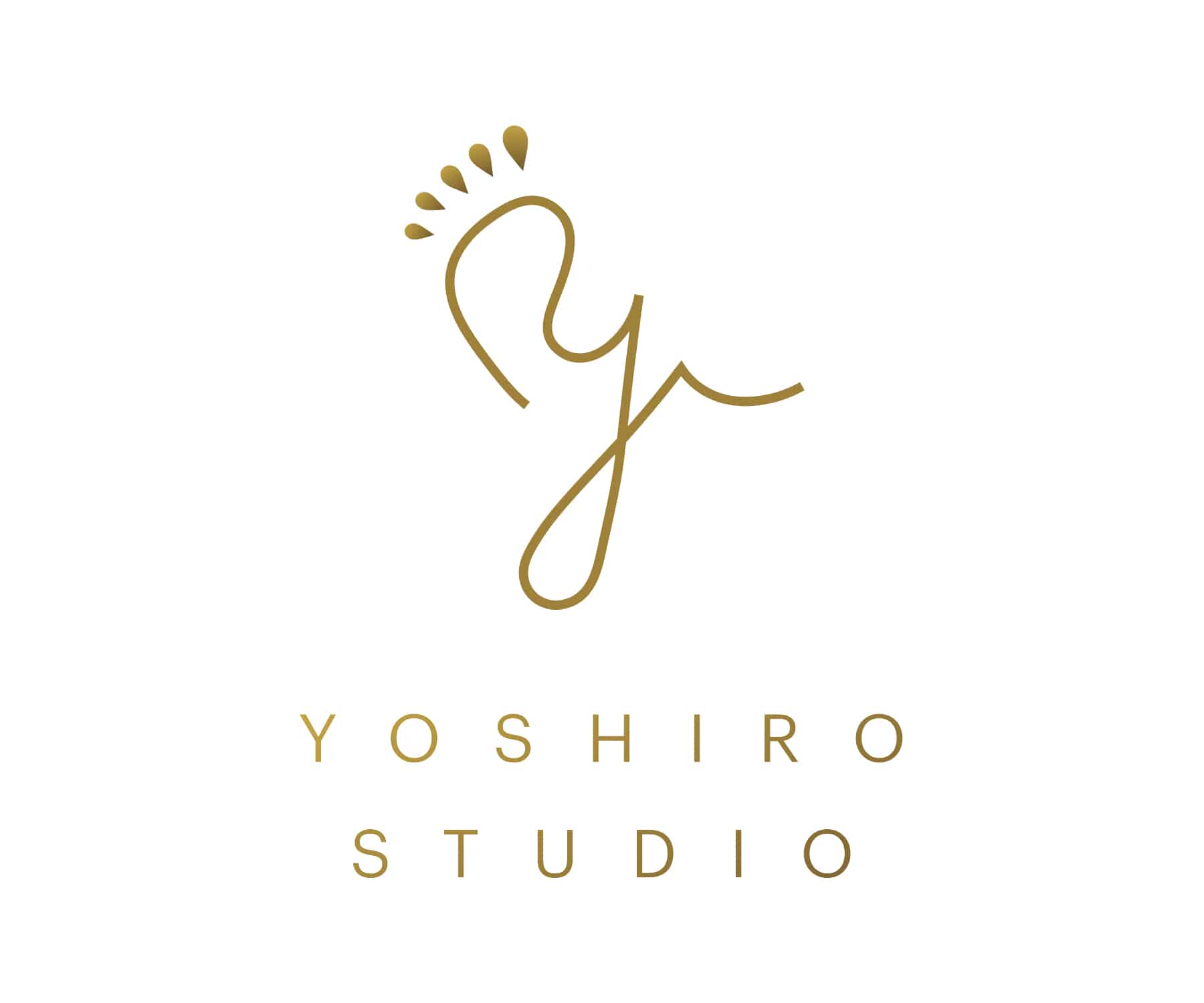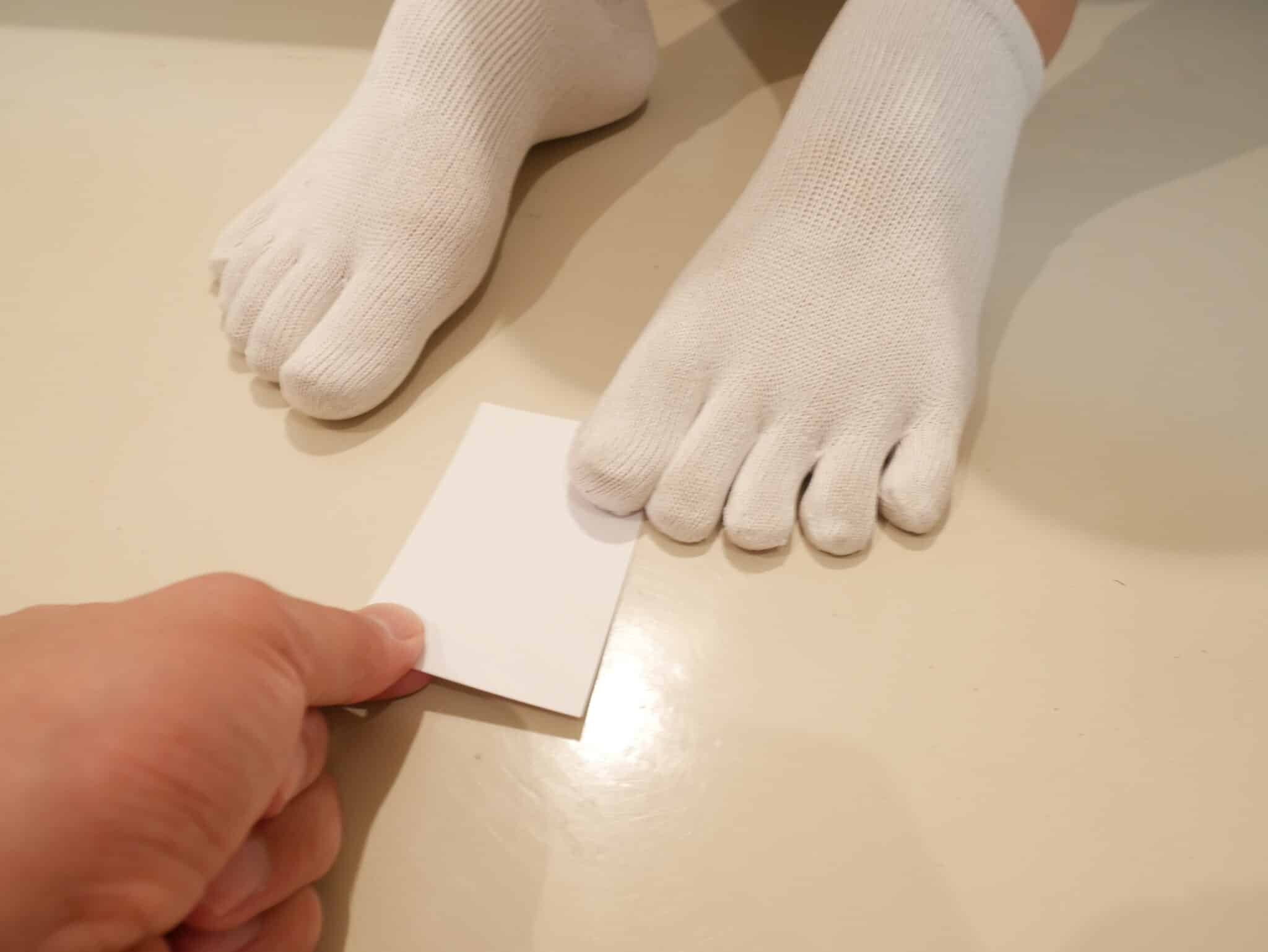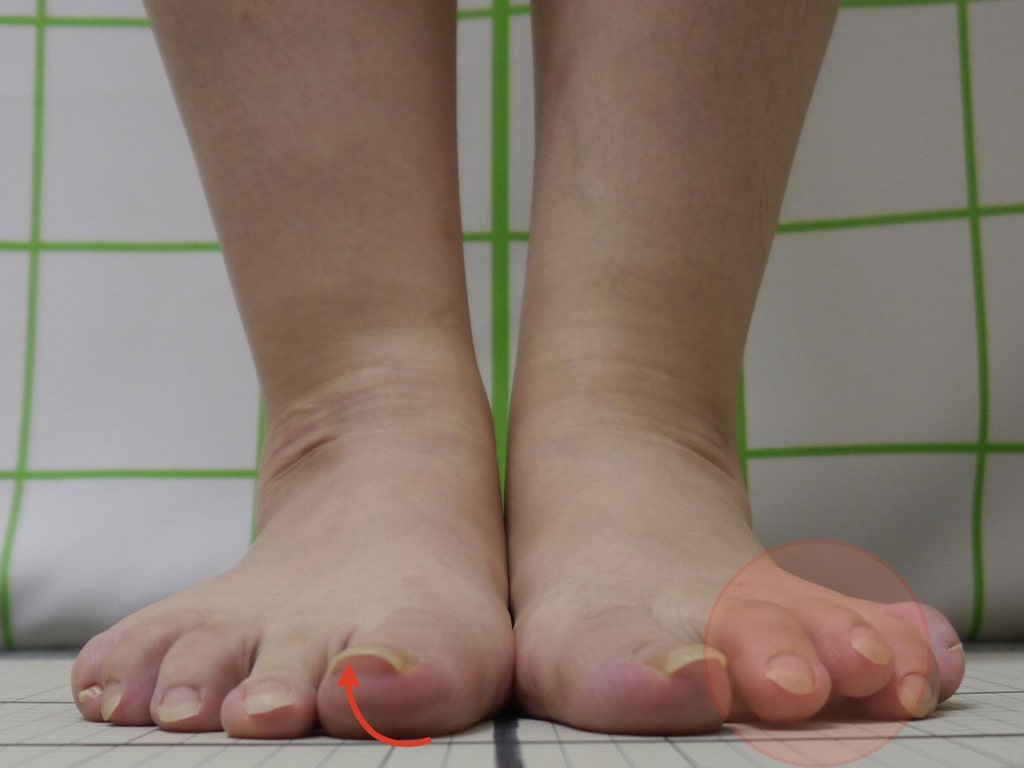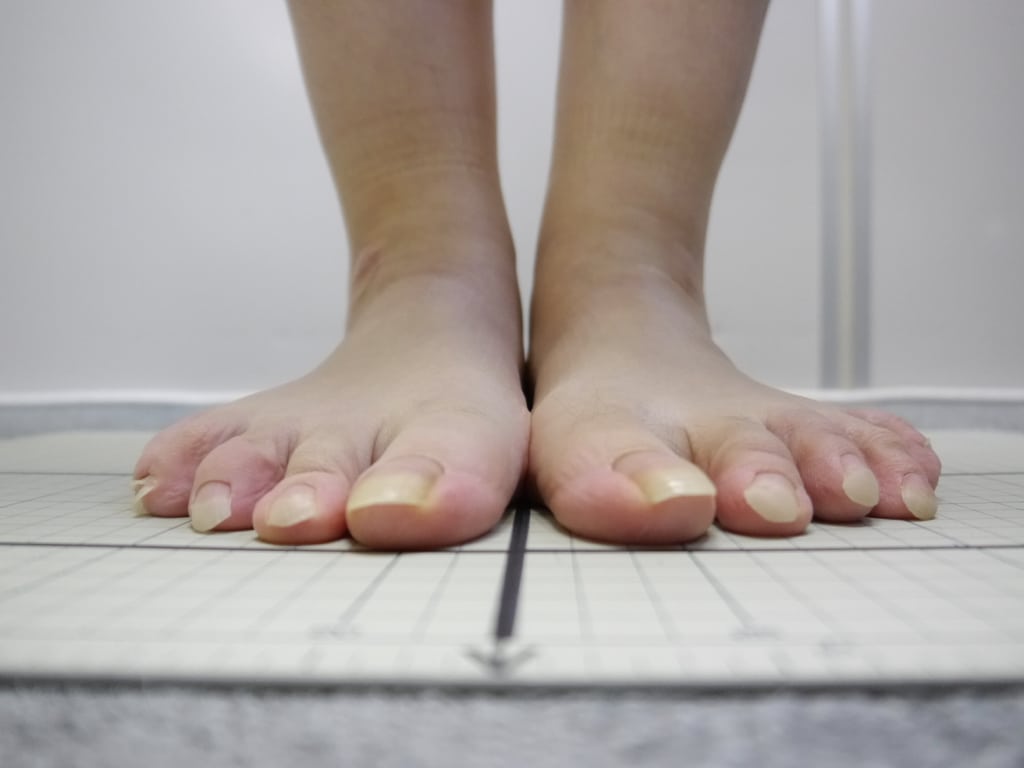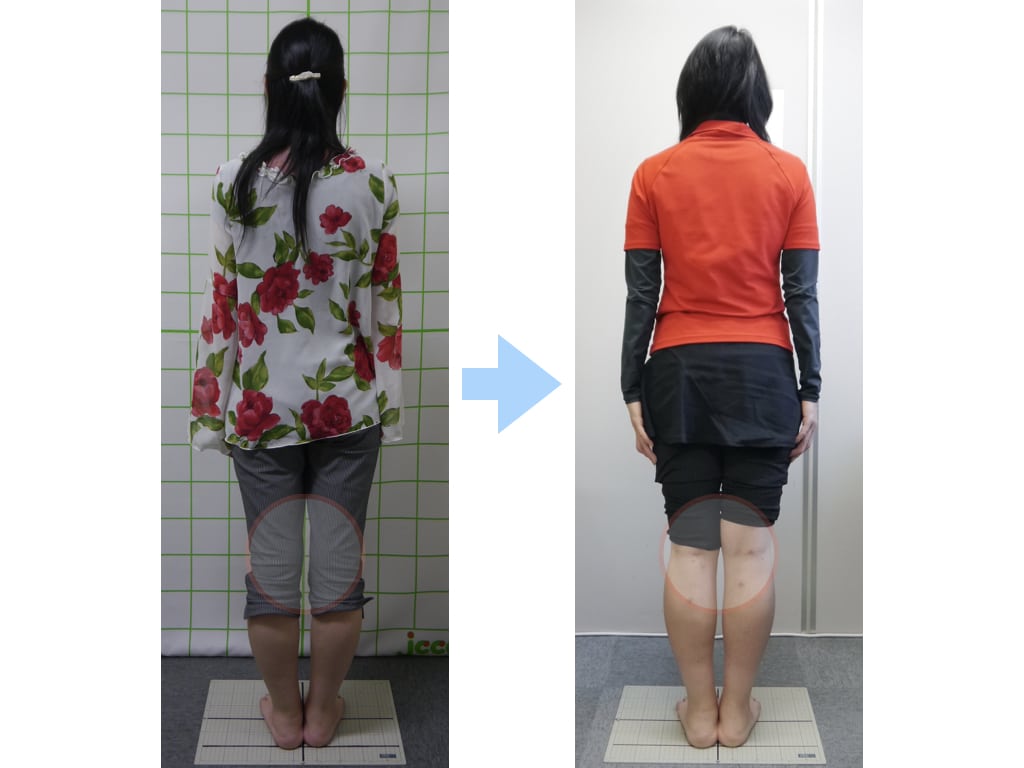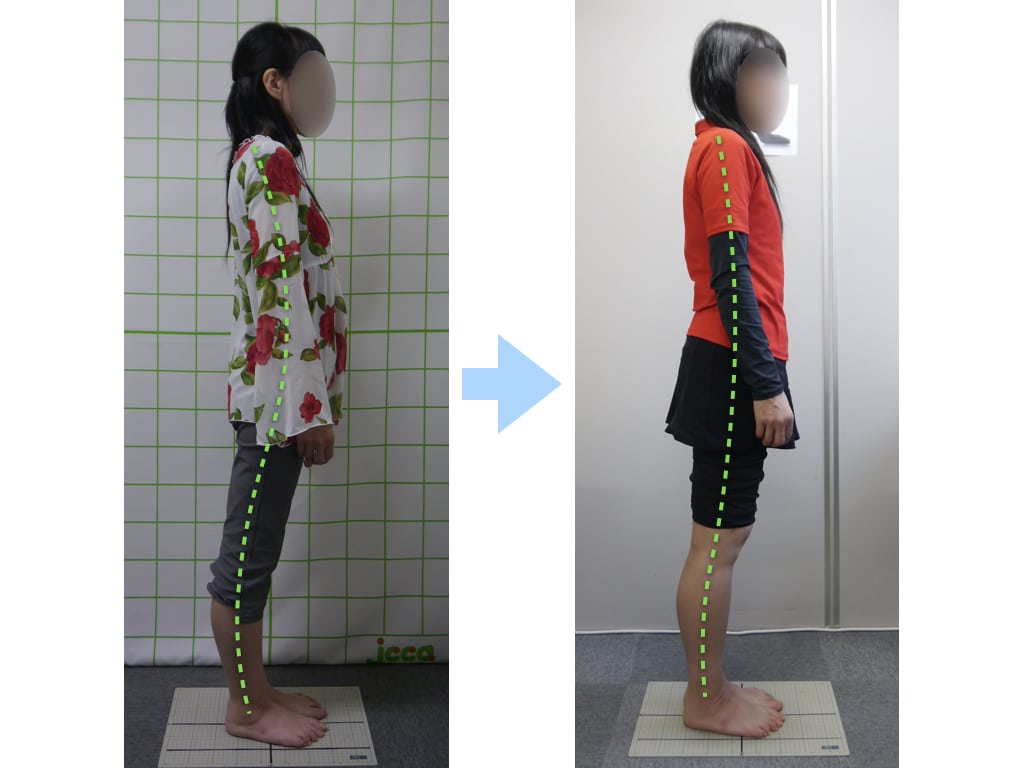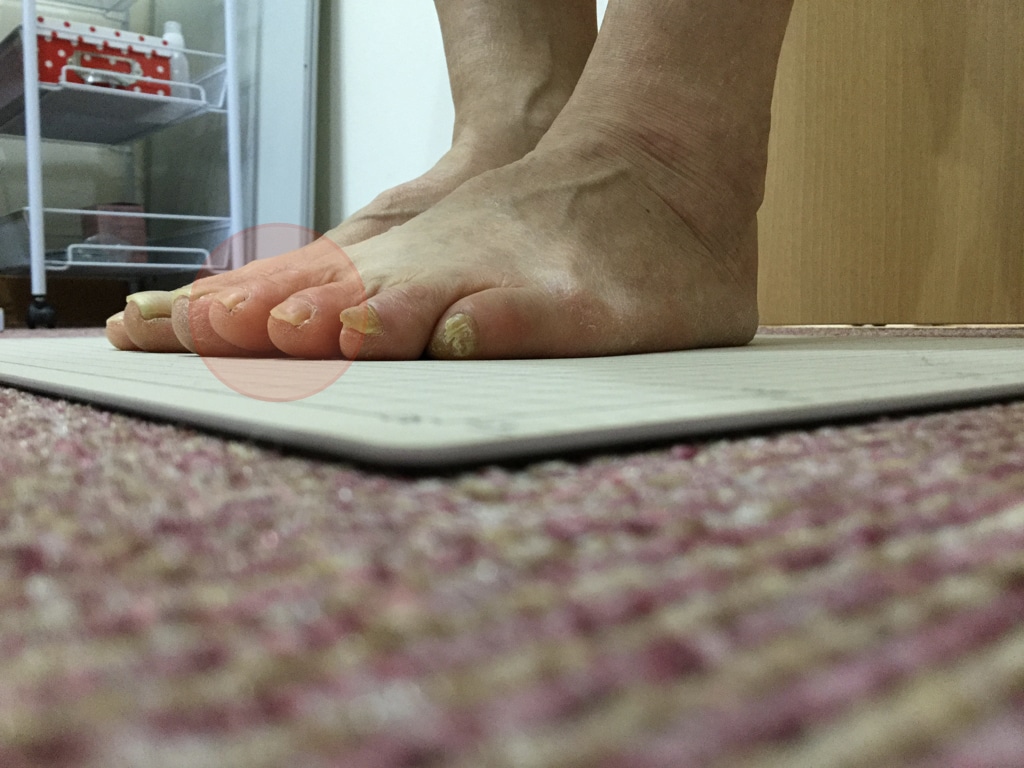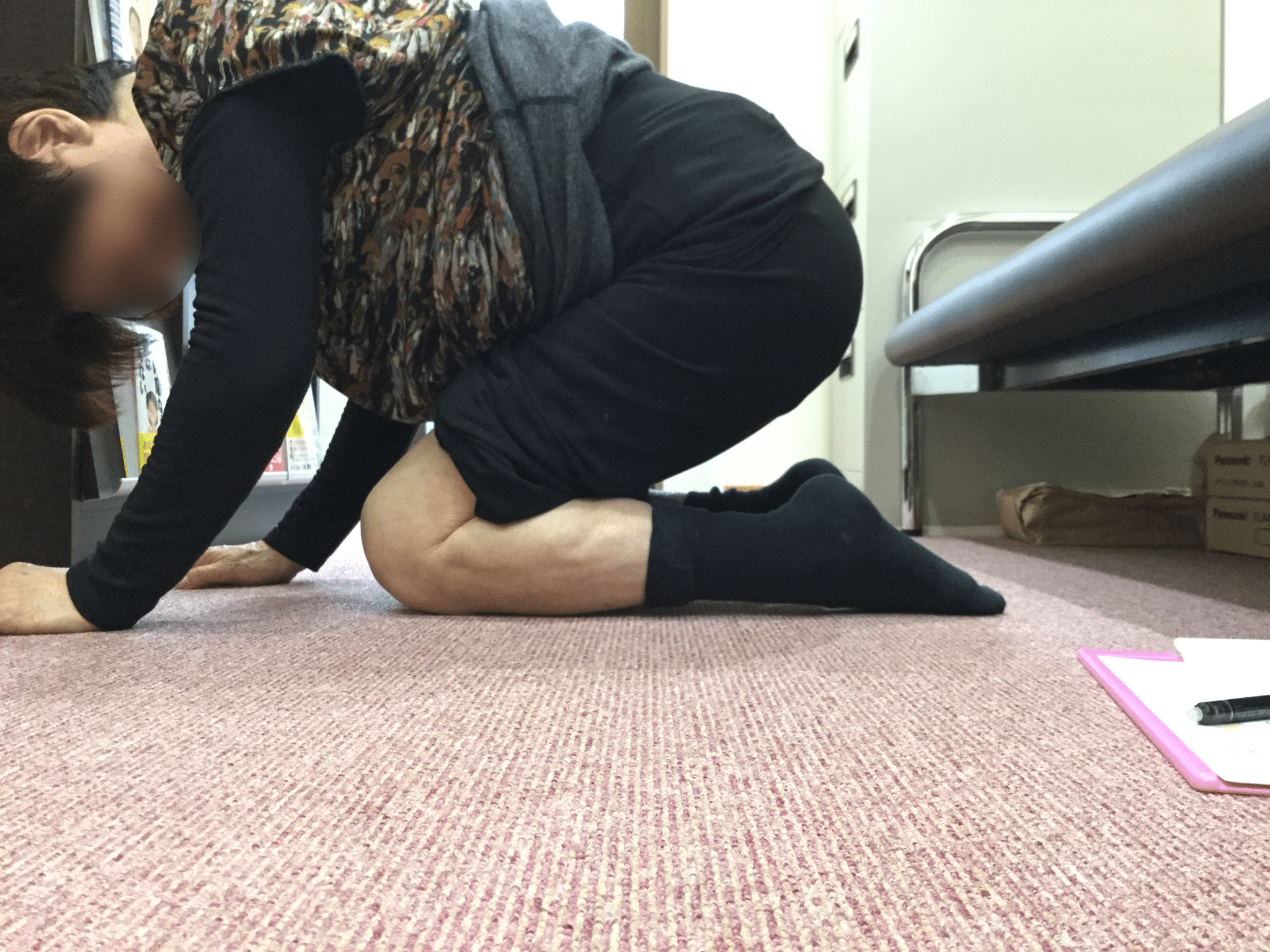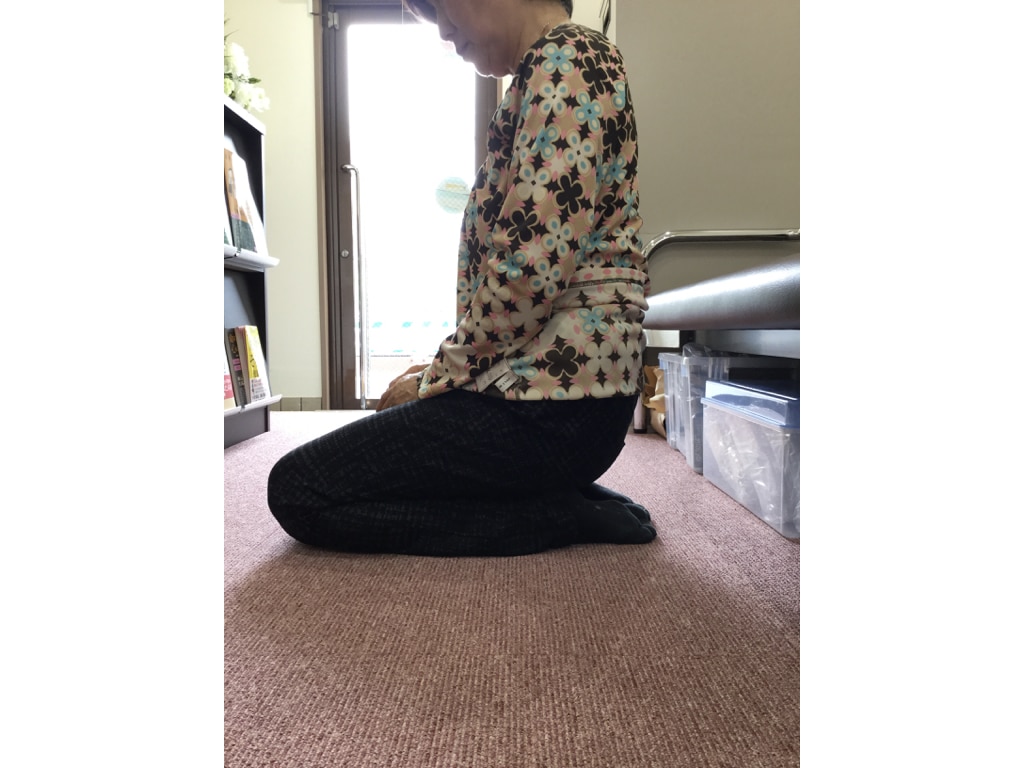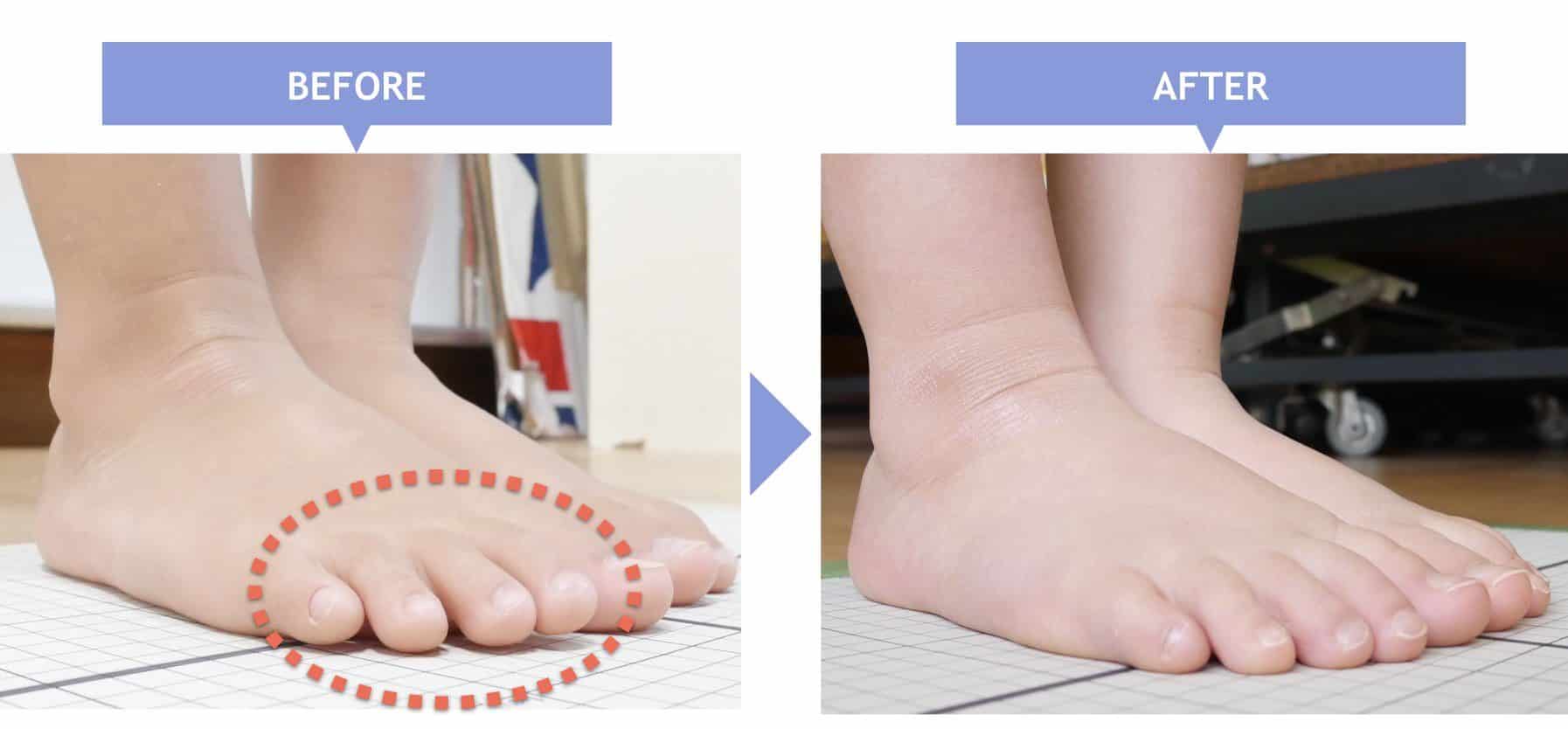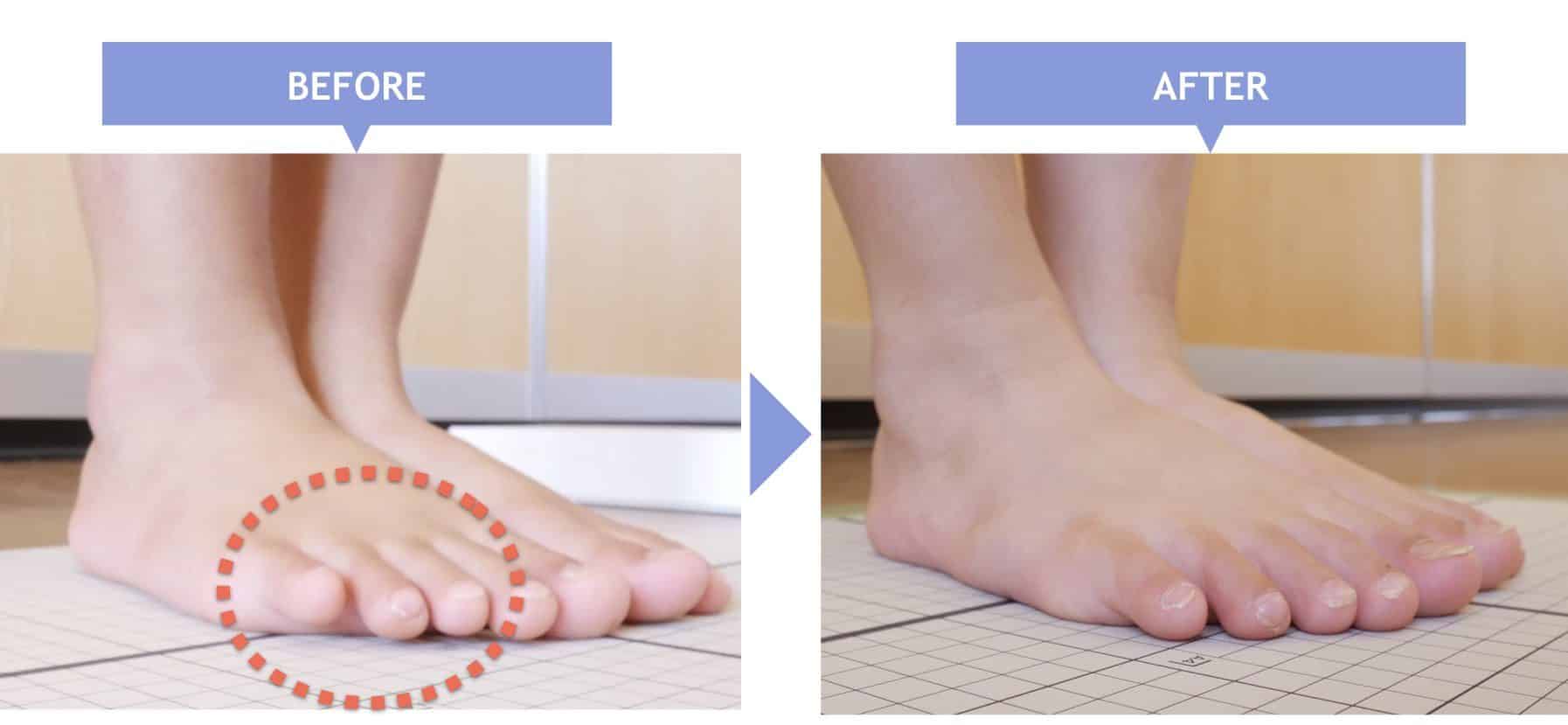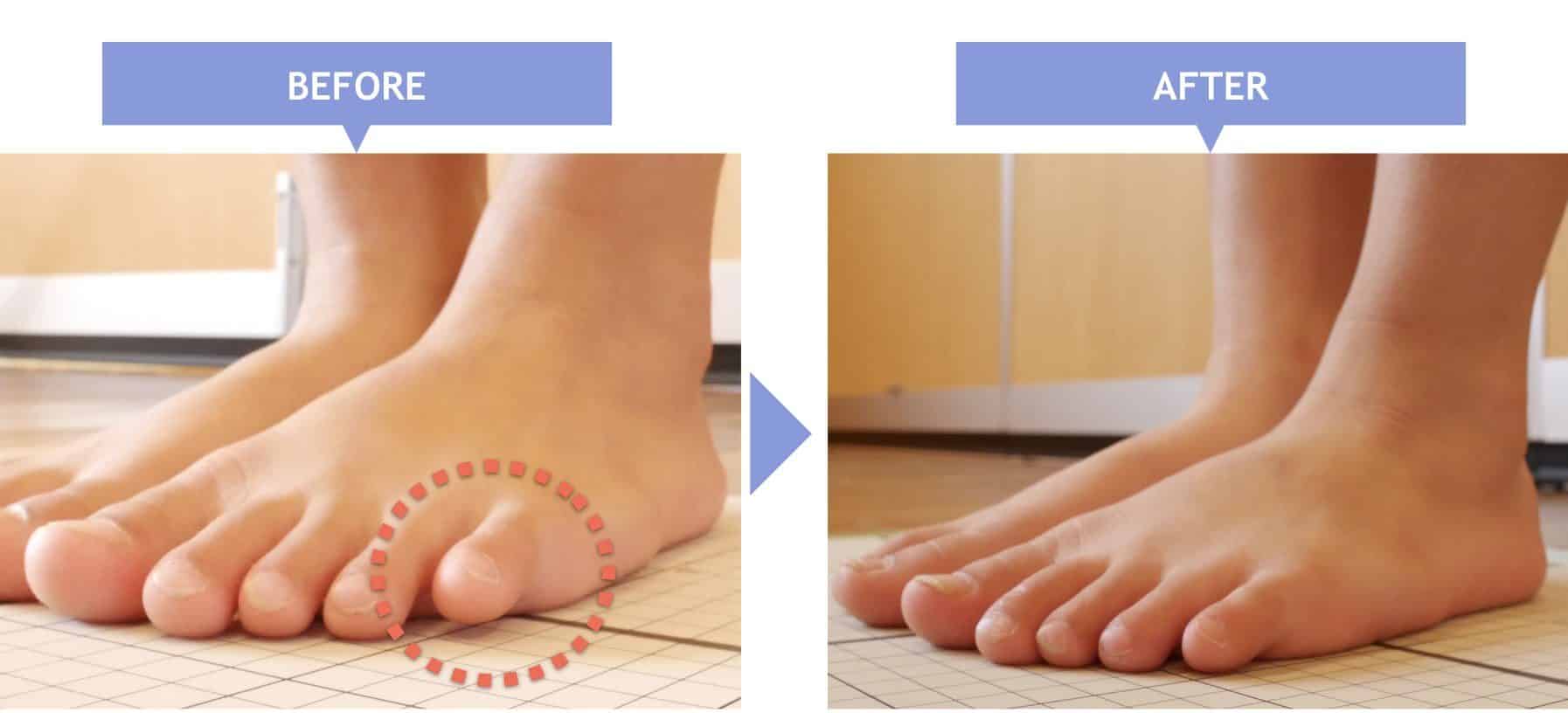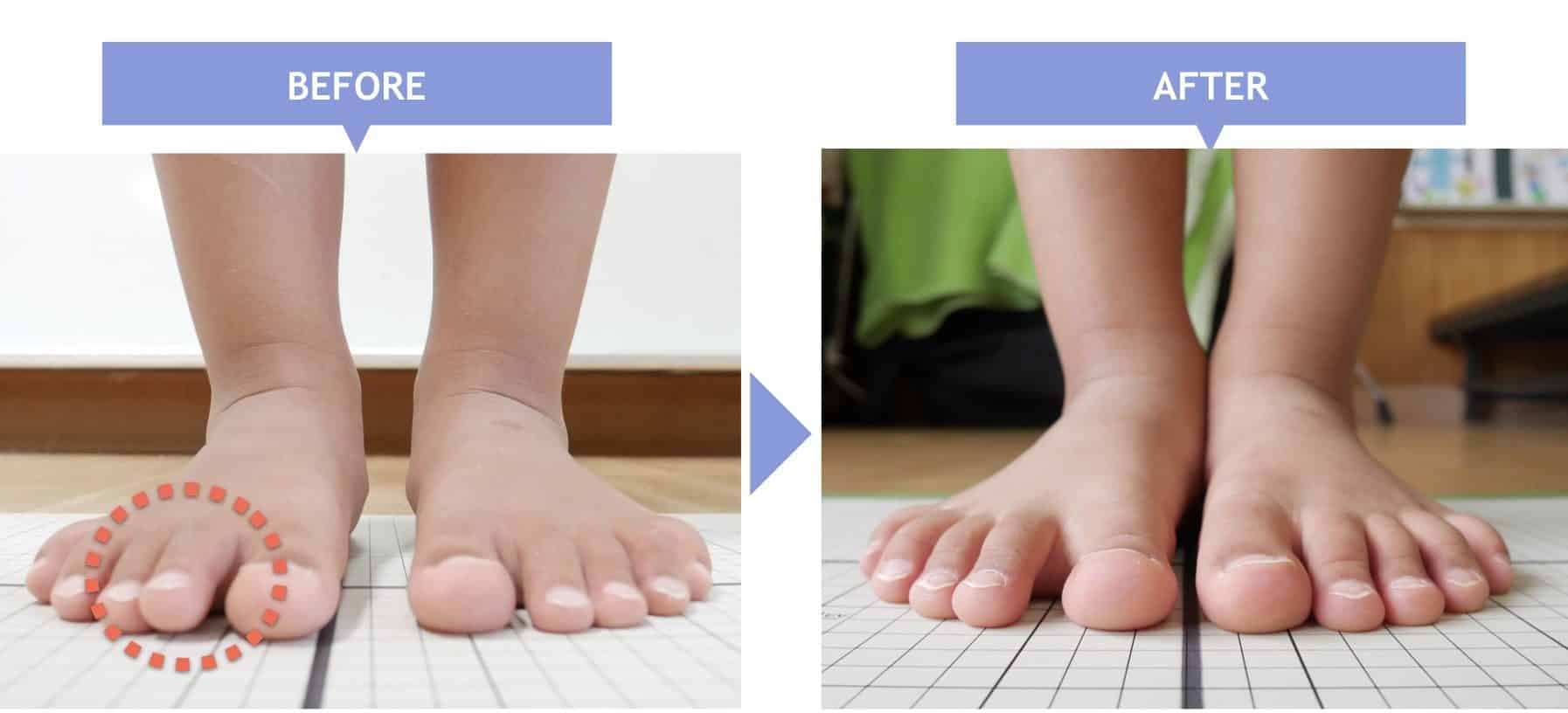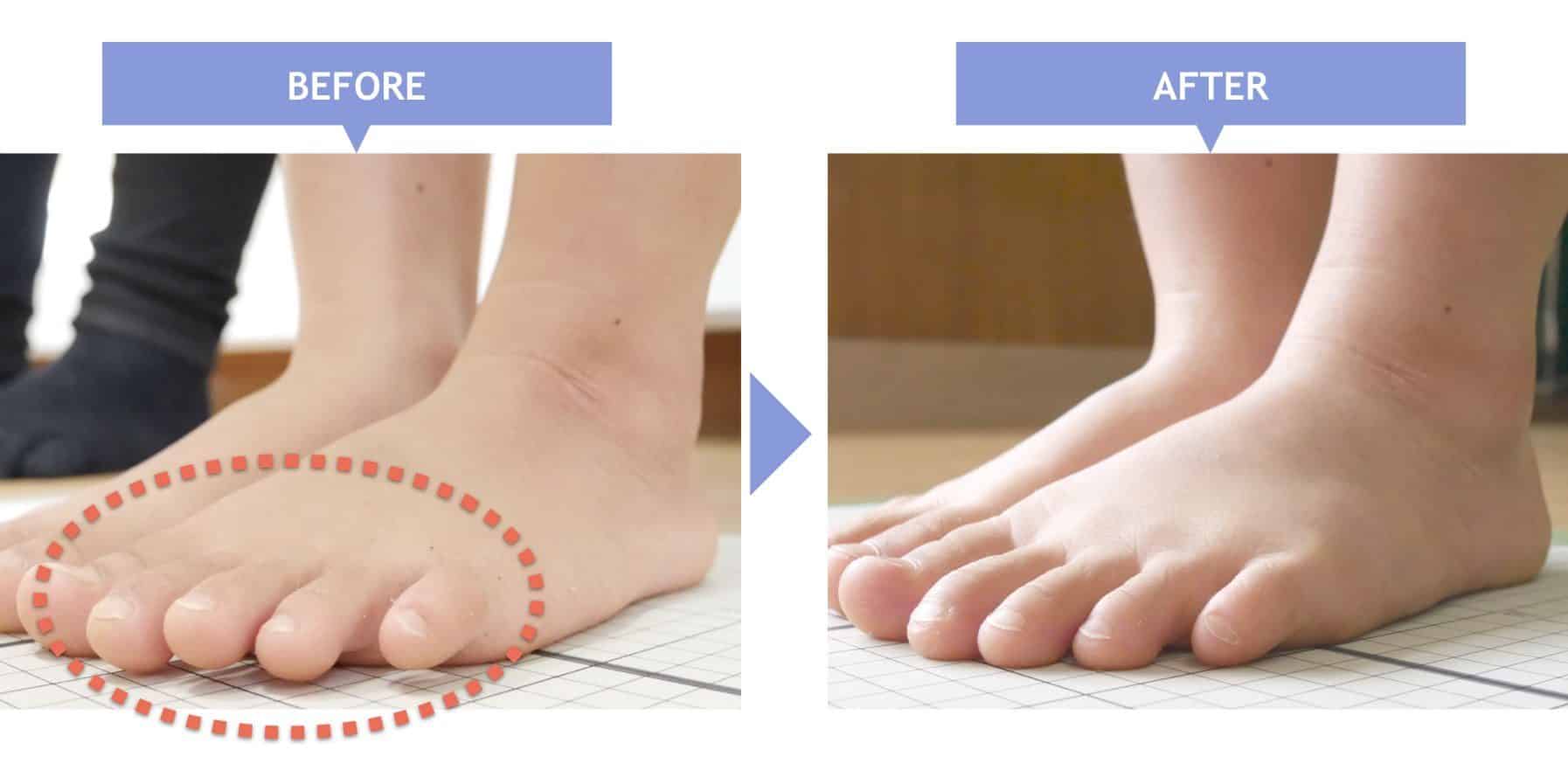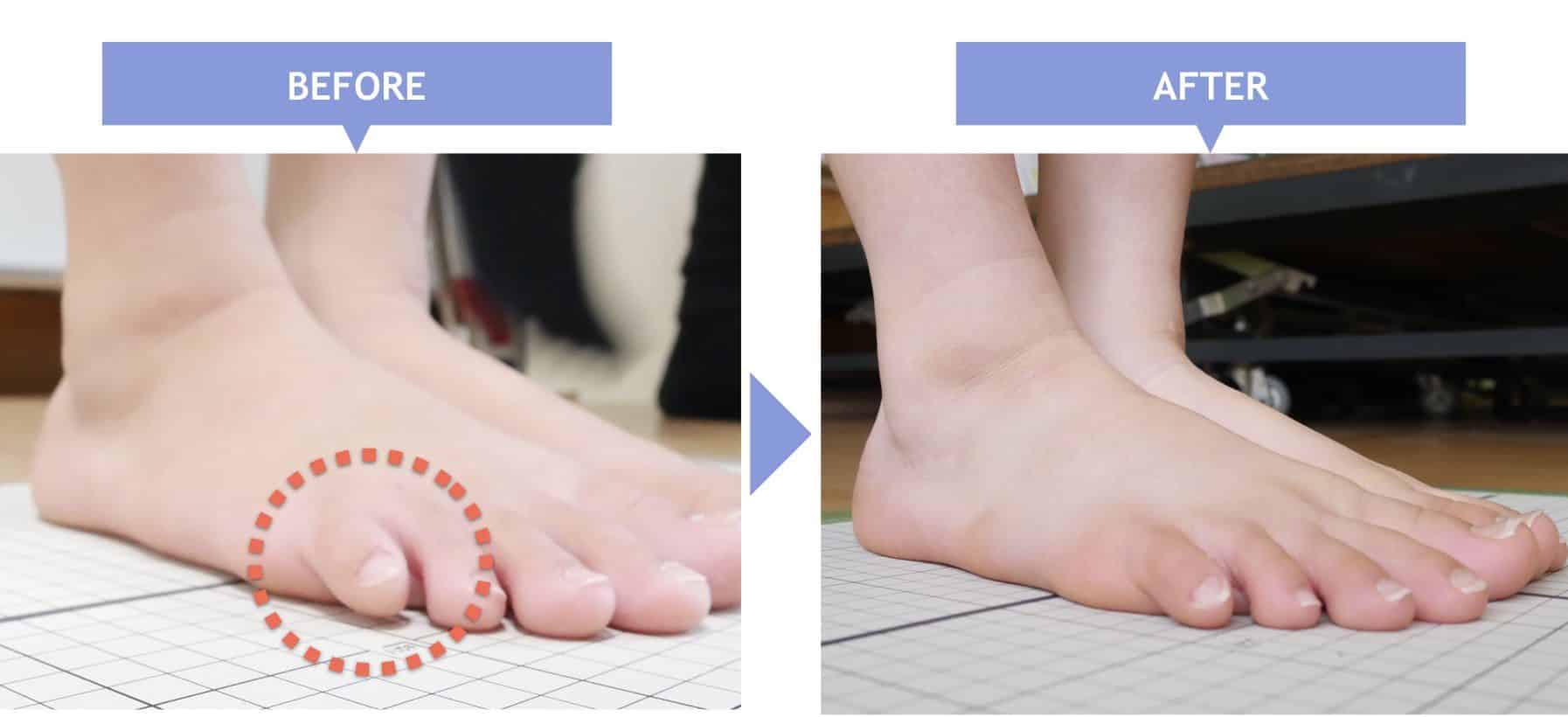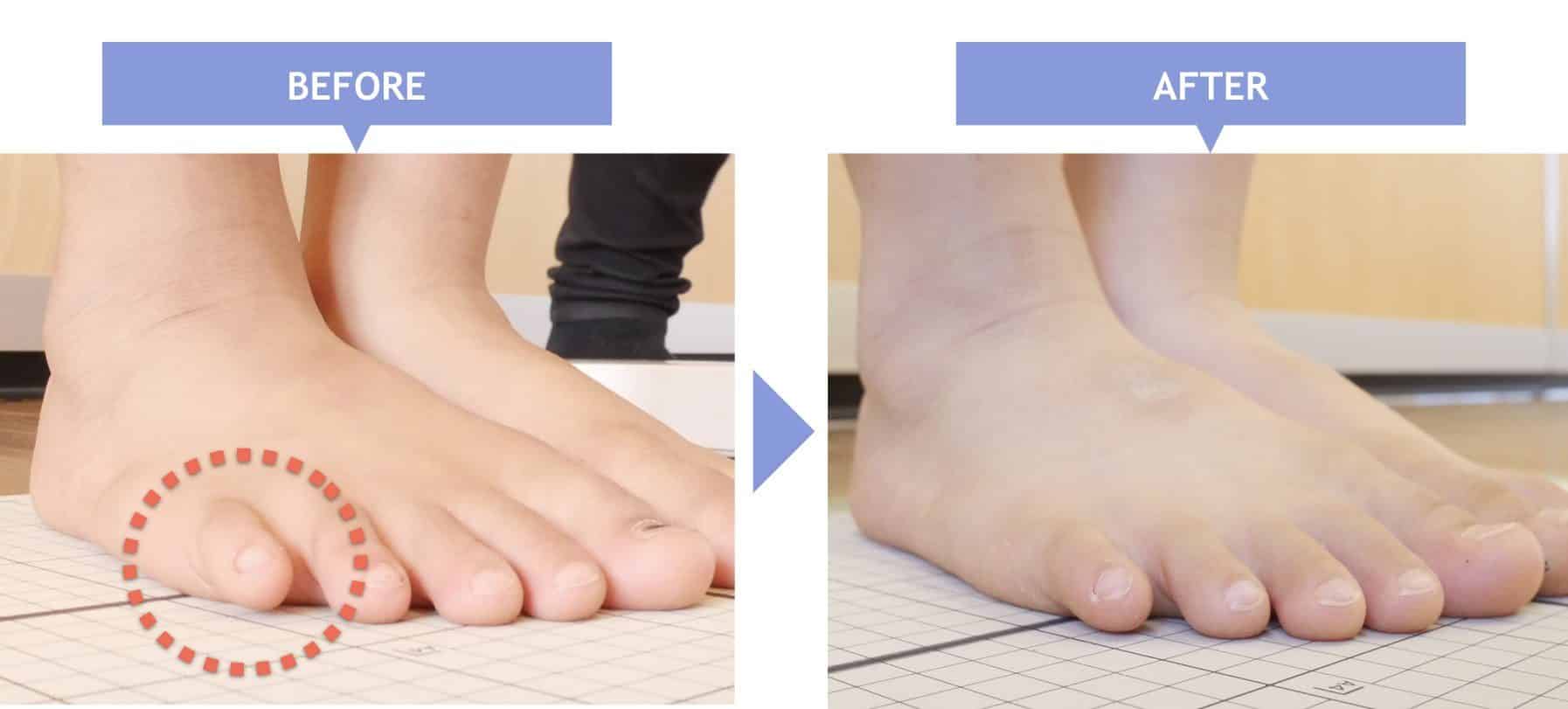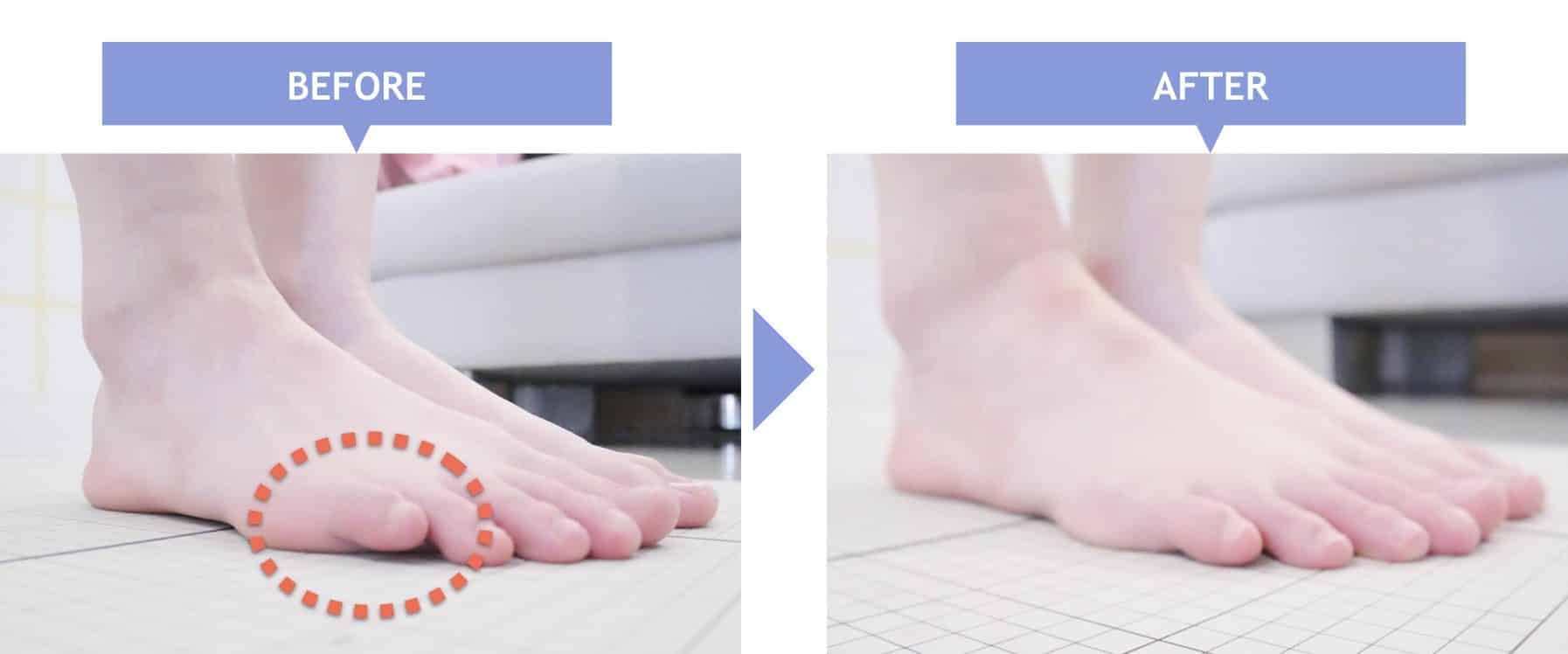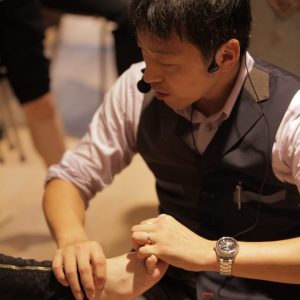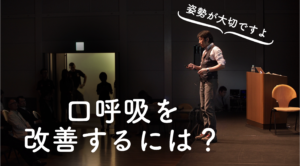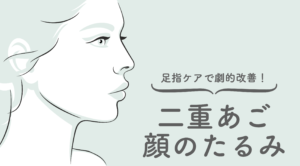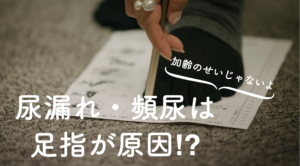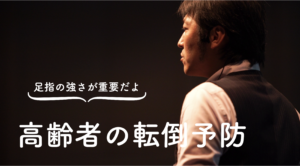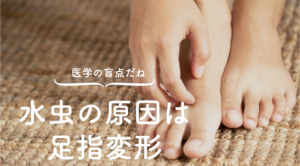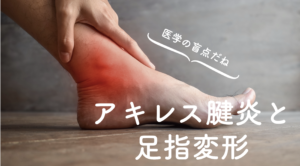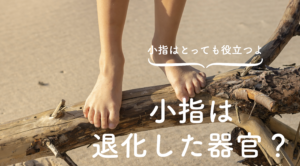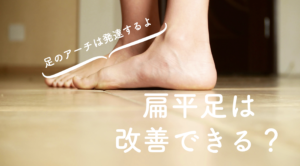What is a floating finger?
A floating toe is a toe that is not under pressure. Some people have a toe that is completely lifted off the ground in appearance, while others tend to have a toe that is grounded but not under pressure and not functioning as a toe.
YOSHIRO STUDIO's treatment of floating toes is painless and does not restrict daily life. We will give you advice on how to improve the condition through self-care while wearing normal shoes. In the case of pain, we will perform the treatment in combination with AKA therapy so that the pain can be removed as soon as possible.
A "paper test" method of identification designed to determine floating fingers.
A plantar pressure measuring device is obvious, but there is also a paper test. Sit deeply in a chair and bend your knees to 90 degrees. In this state, place a thin piece of paper under your toes and press down with your toes. It is best to do this with some kind of socks on, as bare feet have a high coefficient of friction and are less slippery. Be careful not to lean forward or lift your heels. Then slowly pull the paper out. If the paper comes off easily, you have a "floating toe. Try it with all toes and see.
Bend your knees to 90 degrees in a sitting position.
...and try not to float on your heels.
Do not lean forward (backrest)
Do not do it barefoot.
Thumb paper test
Generally, place a "copy paper" or "business card" under your thumb and have the paper held by your thumb.
If you are asked to pull that paper and can hold it with your thumb, you pass the test. In fact, about 90% of people have such poor thumb strength that they cannot hold the paper down. Although this is a fairly simple test, it can be used for fall evaluation and toe evaluation, and I hope many hospitals will try to adopt it.
Little finger paper test
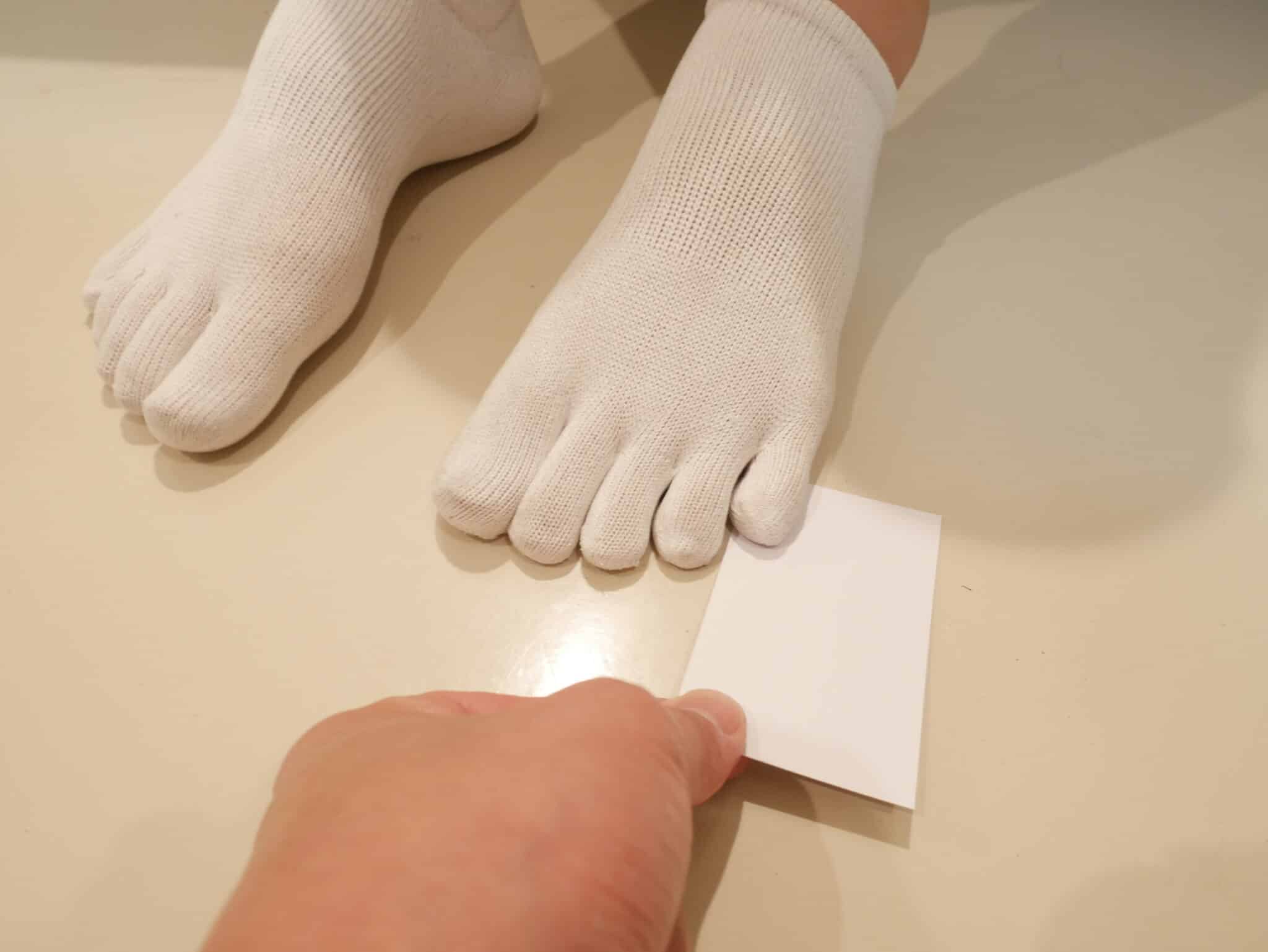
The method is the same as the floating thumb method. Place a piece of copy paper or a business card under your pinky and have your pinky hold the paper. If the paper is held by the pinky finger, the test is passed.
Note that, as in the case of the thumb, this is done without applying any weight. Judge how much you can hold the paper with just the strength of your toes.
How to identify a floating toe with a plantar pressure measuring device
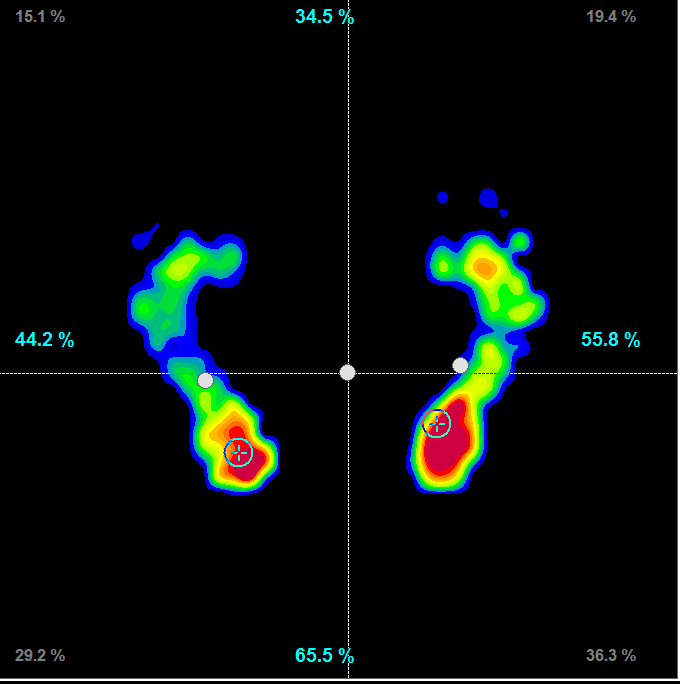
The toes are not in the picture because there is no pressure on the toes. It means that all toes are floating toes. Therefore, the weight is 65.51 TP3T backward, resulting in a heel center of gravity.Prone to hunchback, warped back, and O-legsWe can assume that this is the case.
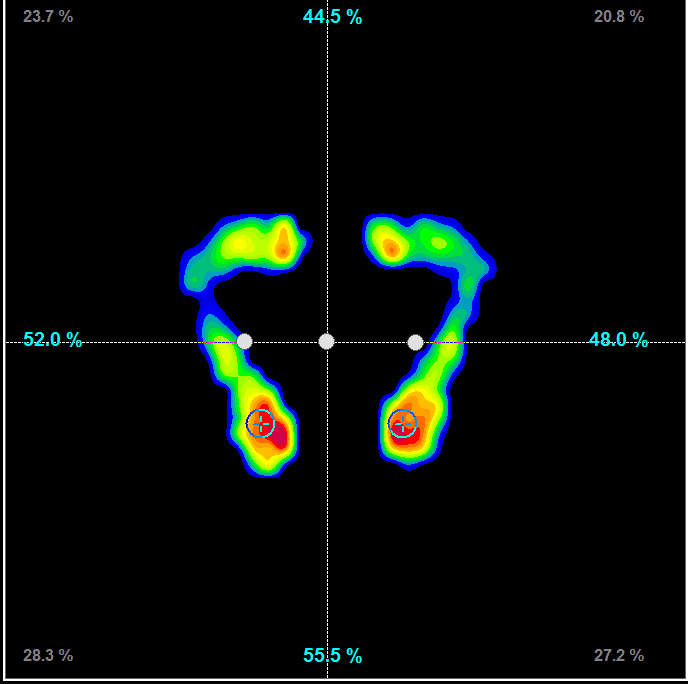
This one also does not show toes because there is no pressure on the toes. All toes are floating toes. Therefore, there is a slight heel center of gravity with 55.51 TP3T weight behind.Prone to hunchback, warped back, and O-legsWe can assume that this is the case.
How to identify a floating finger in a photograph
floating thumb
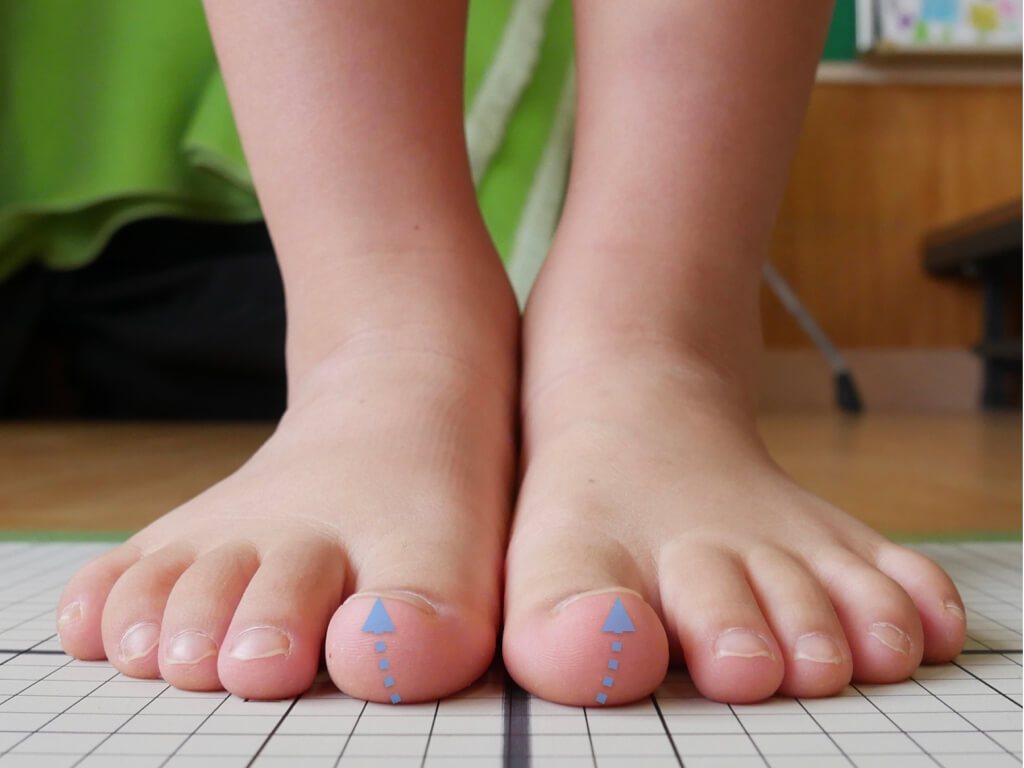
It is easy to see when the photo is taken from the front, but the thumb nail is not visible. This is the floating thumb.Floating thumb is prone to ingrown toenails, X-feet, and back painIt is important to note that the
floating toe on the little finger
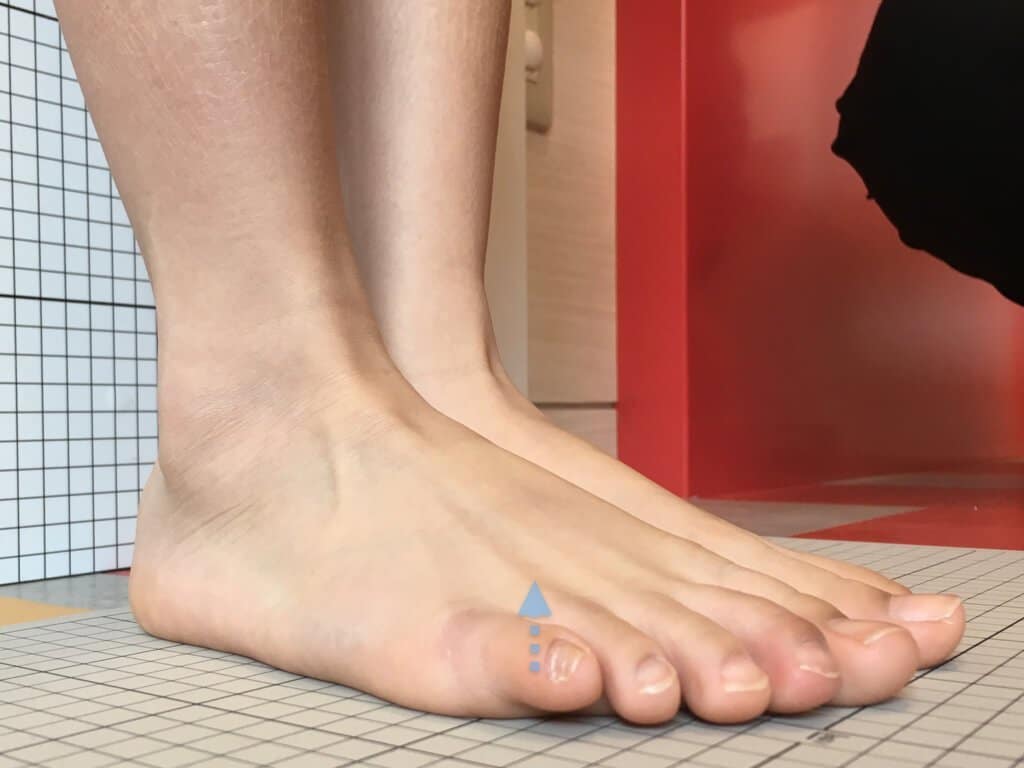
Let's look at the little finger from right next to the ground. A floating pinky finger is a pinky finger that is off the ground. This is due to the tendency to have an outward center of gravity,Prone to sprains, O-legs, knee pain, hip pain, etc.It is important to note that the
What happens when you have floating fingers?
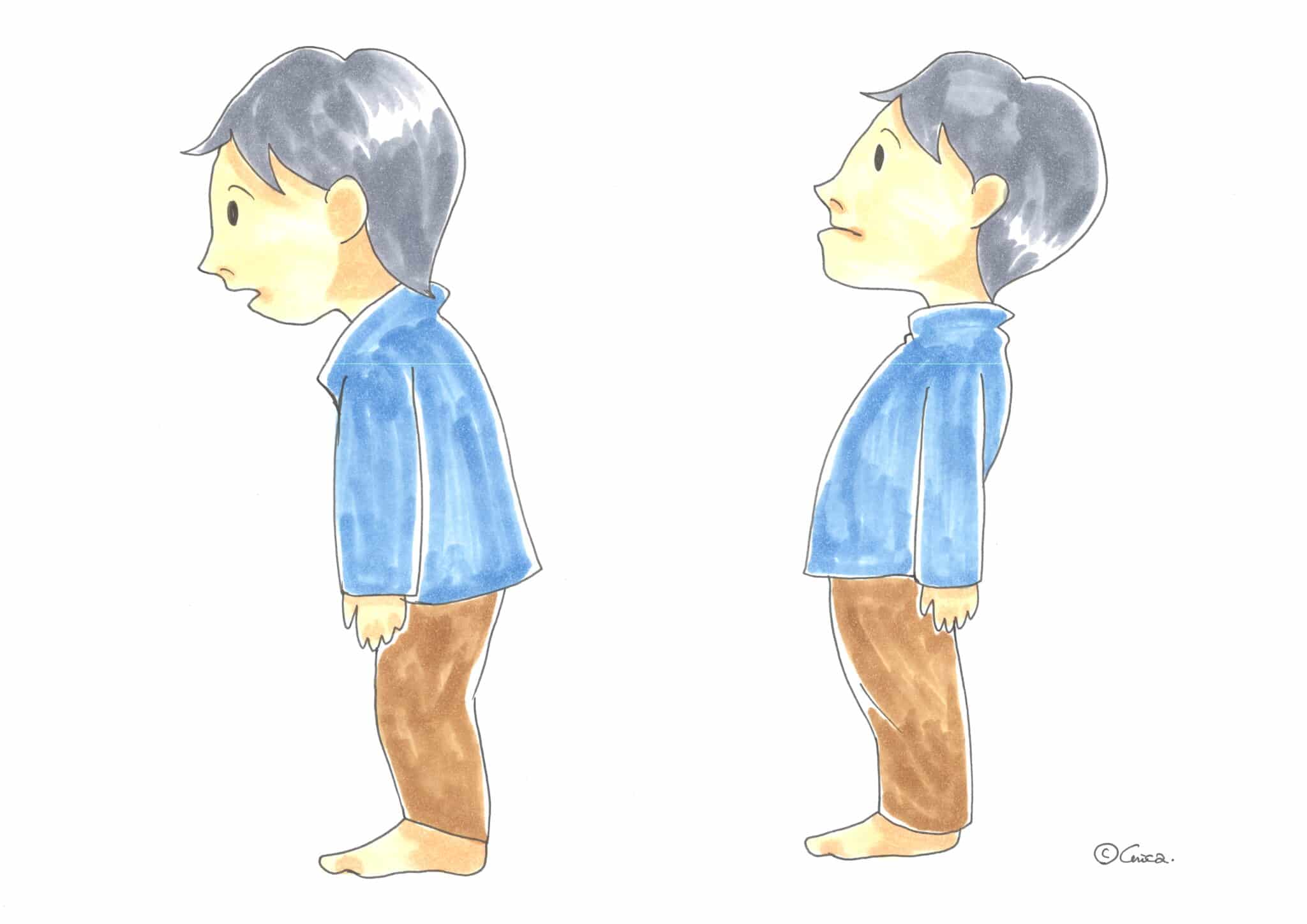
When you have floating toes, you have a "heel center of gravity" when you stand. The ideal center of gravity is said to be 50% in the front and 50% in the back, but people with floating toes carry 30-40% of their weight in the front and 60-70% in the back. The person with floating toes will balance on his or her heels only, so he or she will try to balance by bending his or her upper body (hunching) or arching (slouching). This is one of the body's built-in functions called the postural reflex or recovery response. If this condition continues chronically, the muscles in the back and hips remain overstressed, causing back pain, stiff neck, and stiff shoulders. This is also the cause of what is called "straight neck. It is important to note that mouth breathing and misaligned teeth are also common.
What causes floating fingers?
In most cases, the cause is slippage in footwear, such as shoes that are too large (sneakers or pumps) or have loose laces. It can also be caused by wearing footwear that has nothing to hold the foot in place, such as slippers, clogs, sandals, boots, clogs, slippers, and sandals.
Wearing shoes that don't fit.
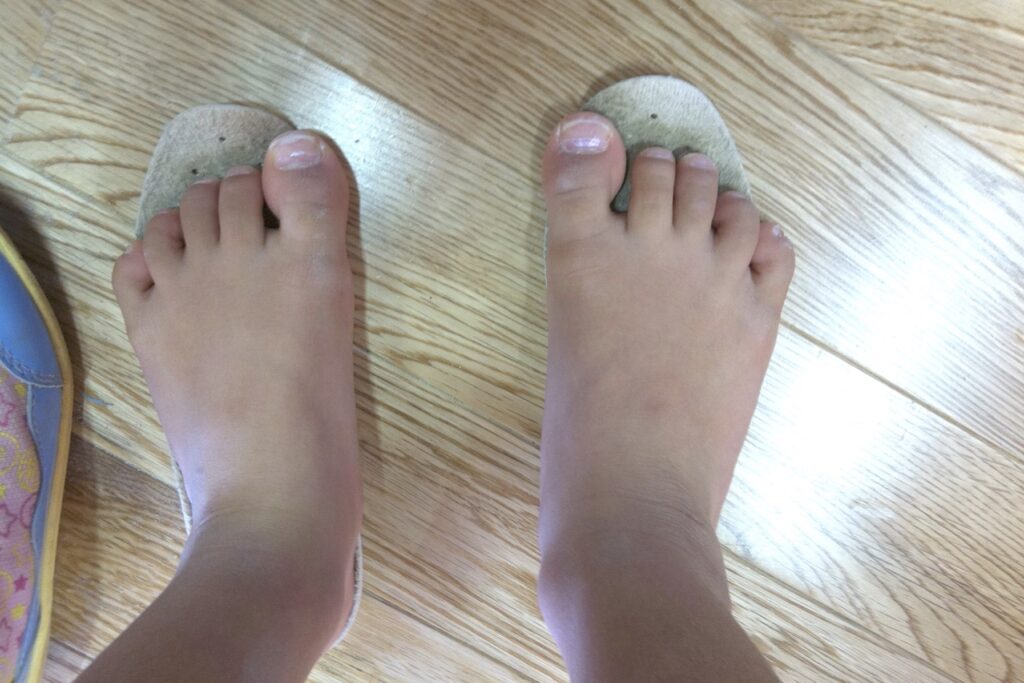
Take out the insoles and place your feet on them. If your thumb or little toe is sticking out of the insoles, the shoes will put pressure on it and make it difficult to use your toes, which can lead to floating thumbs and little toes.
Not secured with string or Velcro.
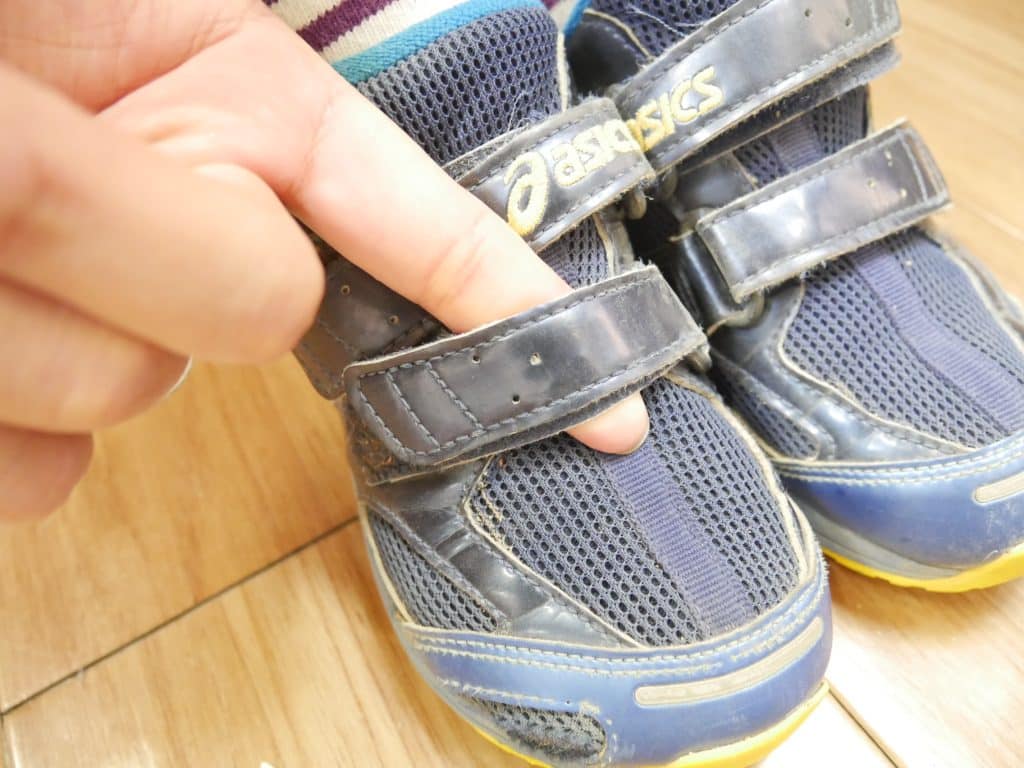
With the shoes on, insert your index finger into the Velcro or laces. If you can get your index finger in, the tightness is not enough. Your foot will slide around in the shoe, making it easier to get a floating toe.
How can I improve my floating finger?
I recommend the magic socks "YOSHIRO SOCKS" and "Hironoba Exercises" YOSHIRO SOCKS are effective even if you cannot wear them during the day, just wear them while sleeping or cooking. Just 5 minutes of HIRONOBA exercise improves the condition of floating toes by 44%. With long-term continuation, the floating finger rate in nursery schools has been reduced to 9%. As the floating toe improves, posture improves, and with it, back and knee pain. The use of socks to correct the toes is even more effective.
gymnastics (esp. at Hironoba Gymnastics)
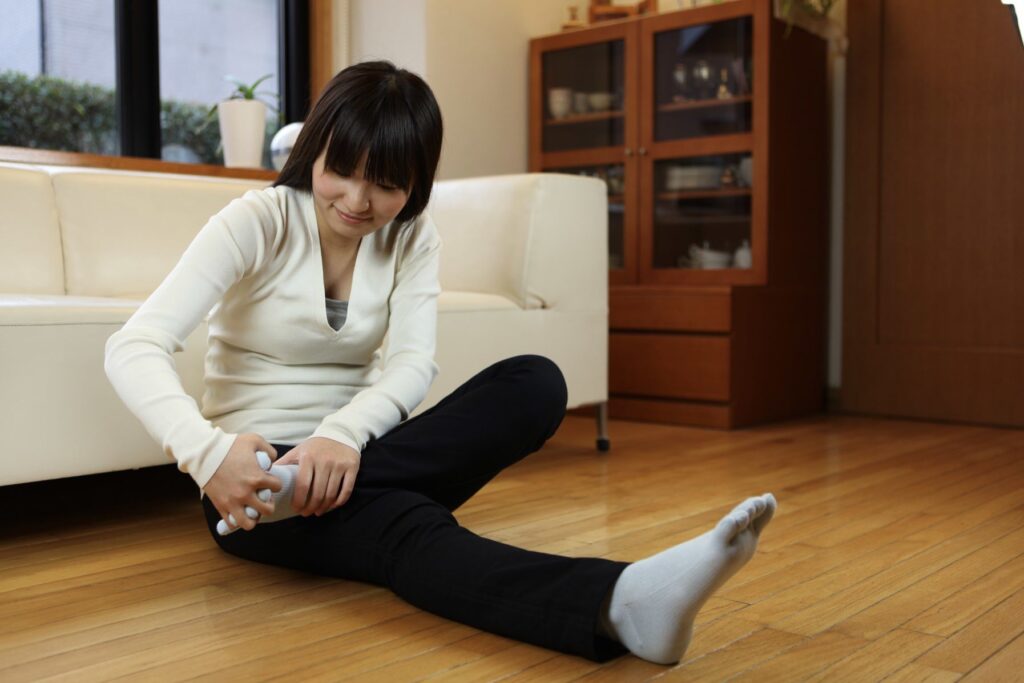
YOSHIRO SOCKS
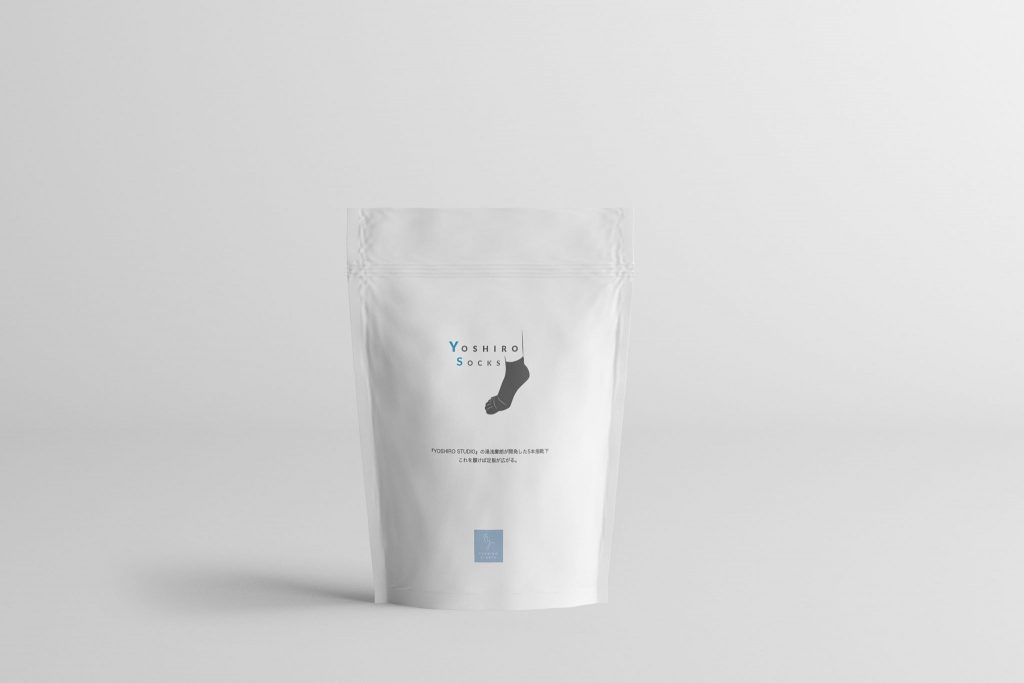
Testimonial 1 from a person whose floating finger improved.
 I.
I.At the age of 23, I began to have pain in my hands and feet and was diagnosed with rheumatism at the hospital. The pain in my feet was particularly severe, and when I walked, I walked on my heels with my toes in the air. The continuous unreasonable posture led to lower back pain, knee pain, and O-legs. Her mother-in-law introduced me to her and she came to see me for counseling. After 5 months of doing Hironoba Exercises, her floating toes were healed and she was able to walk with a firm kick to the ground. The pain in her arms and legs disappeared, and she happily reported, "I can carry my 22 kg daughter, a third grader, in my arms and I feel happy.
Testimonial 2 from a person whose floating finger improved.
 Mr. S.
Mr. S.An orthopedic surgeon diagnosed a torn meniscus and a stretched medial collateral ligament. Both knees were in pain and she was unable to sit upright. After being treated by Dr. Yuasa and doing the Hironoba Exercises at home every day, the pain in my knees gradually disappeared and I am now able to sit upright!
Example of improvement of floating finger
Finally.
Floating toes are caused by "slipping" in footwear, such as shoes that are too large (sneakers, pumps) or have loose laces. It can also be caused by wearing footwear that has nothing to hold the foot in place, such as slippers, boots, or other footwear that has nothing to hold the foot in place. When the foot slips in the shoe, the footwear is in an attempt to hold the footwear in place by lifting the toes. As much as possible.Take off your slippers in the house and don't wear socks either!The following is a list of the most common problems with the
